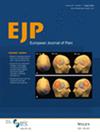The Role of Peripheral N-Methyl-D-Asparate (NMDA) Receptors in Itch and Pain: A Narrative Review
Abstract
Background and Objective
NMDA receptors, predominantly located in the central nervous system and known for their roles in synaptic plasticity and central sensitisation of pain and itch, are also expressed in peripheral sensory neurons. Emerging evidence suggests that peripheral NMDA receptors contribute to pathological pain and potentially itch, identifying them as promising therapeutic targets. The aim of this review is to explore the role of peripheral NMDA receptors in pain and itch and to summarise the effectiveness of topical NMDA antagonists in managing these sensations.
Databases and Data Treatment
This review was conducted through a systematic search of the PubMed database using MeSH terms and keywords related to ‘peripheral NMDA receptors’, ‘pain’, ‘itch’ and ‘topical ketamine’. Additional references were included based on expert knowledge and reference tracking. Only English-language articles were considered.
Results
Animal studies demonstrate that peripheral NMDA receptors are involved in inflammatory and certain neuropathic pain models, with antagonists showing analgesic effects. Limited studies also suggest their role in non-histaminergic itch through glutamate signalling. In humans, topical ketamine has shown mixed results for pain relief, and preliminary clinical reports suggest potential antipruritic effects. However, controlled clinical trials, particularly for itch, are lacking.
Conclusion
Peripheral NMDA receptors are involved in the transmission and sensitisation of both pain and itch, especially under pathological conditions. While topical ketamine may offer therapeutic benefits, particularly for non-histaminergic itch and neuropathic pain, further clinical research is necessary to confirm its efficacy, safety and optimal use.
Significance Statement
This review highlights the underexplored role of peripheral NMDA receptors in itch, especially non-histaminergic pathways, and synthesises emerging evidence for their therapeutic potential. By comparing pain and itch mechanisms, it suggests that topical ketamine could serve as novel treatments for refractory itch and localised pain, warranting further clinical investigation.


 求助内容:
求助内容: 应助结果提醒方式:
应助结果提醒方式:


